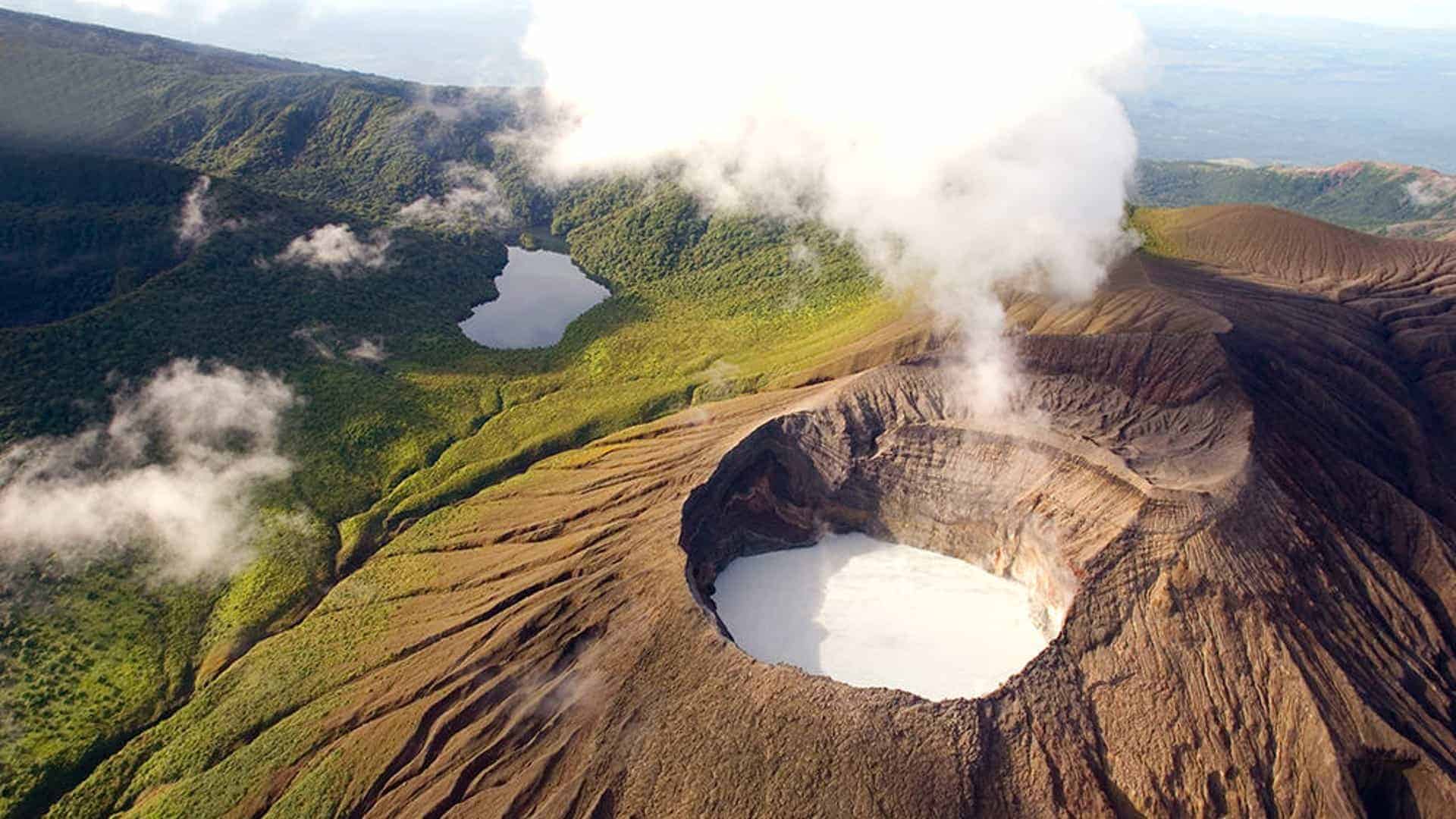Table of contents
Your plane has landed, you’ve made it through customs, and you step outside to take your first breath of outdoor oxygen in Costa Rica.
Now what?
How do you get to your first lodging, and how do you get from there to your next destination and beyond?
Costa Rica is a small country — less than 20,000 square miles, roughly the size of West Virginia — but it can be challenging to figure out how to get around in Costa Rica.
All the reasons that attract people to this country, including its steep mountains, rushing rivers, dense jungles and secluded beaches, also pose unique transportation challenges.
If you book an adventure tour in Costa Rica, transportation is usually included, but you’re going to need a strategy for getting around the rest of the time.

scuba diving, bird-watching, rainforest exploration, jungle river rafting … it’s crazy how much cool stuff there is to do here!
Your choices include buses, shuttles, taxis, rental cars, small planes and sometimes even boats. All of these come with advantages, disadvantages and pain points.
Let’s discuss your options for getting around Costa Rica so that you can make informed decisions about the transportation methods that will work best for you.
#1
Getting to Your Lodging
The first transportation decision to make is which airport to fly into. There are two international airports — the centrally located San José (which is actually in Alajuela), and Liberia in the northwest. If you’re planning to visit the northwestern part of the country, you can save yourselves hours of driving by booking your flight to arrive in Liberia.
But most people fly through San José, and most flights arrive at night, so it’s often necessary to book a hotel near the San José airport before proceeding to your real destination the next day.

Check with your lodging to see if it provides a shuttle to pick you up at the airport. If not, you can easily catch a taxi, though if it’s very far from the airport, it will cost you.
If you book a vacation rental with Special Places of Costa Rica, we will be happy to provide transportation from either airport. Since all our rentals are in the northwestern Guanacaste province, we charge $20/person and a minimum of $80 for a ride from Liberia, but $35/person and a minimum of $220 for a ride from San José.
However you get to your first bed in Costa Rica, you probably have big plans to travel elsewhere in the days ahead, whether it’s a beach, a volcano or a birdwatching tour. And you’re going to need a way to get there.
Here are some of the top strategies for getting around Costa Rica.
#2
Take a Bus
Buses are by far the cheapest way to travel around Costa Rica. Buses are ubiquitous and low-priced, and many Costa Ricans use them every day to get to work, or to take a vacation once or twice a year.
Buses are cheap but annoying for several reasons: 1) their departure and arrival times are often poorly posted or inaccurate, 2) they don’t answer their phones, 3) their websites are useless, or 4) they often face long delays for unexpected reasons.
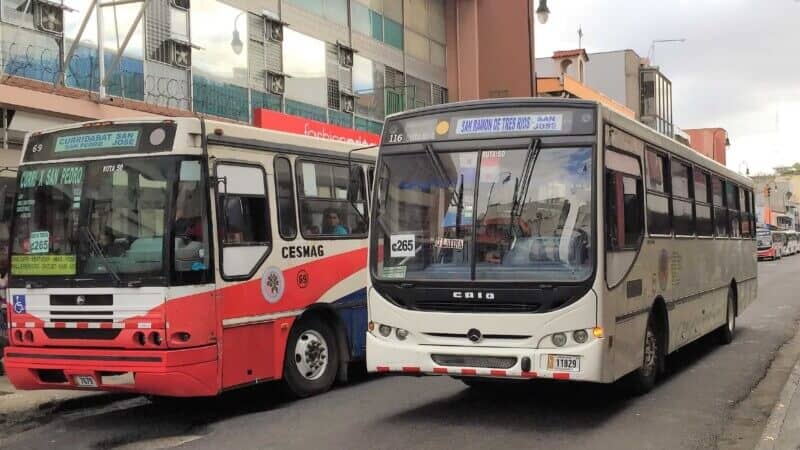
Yet buses are the cheapest way to get around Costa Rica, not counting hitchhiking. So save your money, grab your bag and jump on.
But one word of warning: Always try to get a ticket the day before. Otherwise, you may find yourself standing in the aisles when every seat is taken by a ticketed passenger.
#3
Take a Taxi
If you’re traveling a short distance, especially in a big city, a taxi may be your best option. Official taxis in Costa Rica are almost always red, though airport taxis are often orange.
All official taxis have a “maría” — a meter that counts up the minutes and the cost. In case your taxi driver forgets, “Ponga la maría” is the proper way to say, “Put on the meter.”
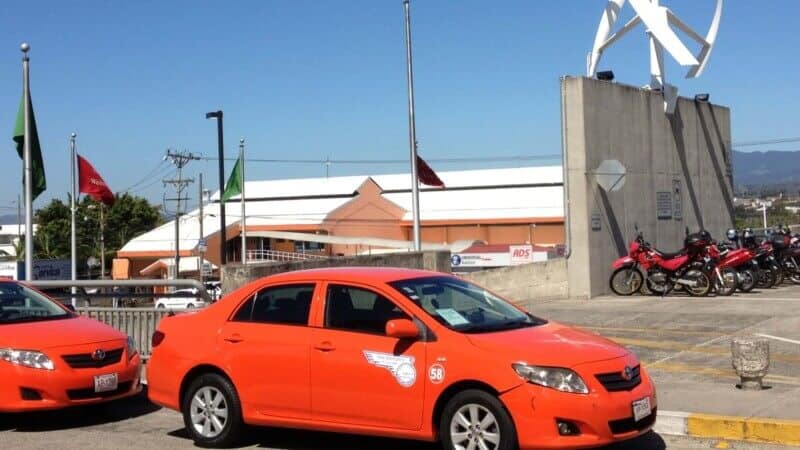
If you’re facing a long drive, your best option may be to negotiate a price in advance. But be careful — not knowing the distance you’re traveling or the exchange rate in this country, your taxi driver may try to charge a rate that’s higher than the drive is worth.
Subscribe to our newsletter
to stay up to date
Costa Rica is also full of “piratas” — “pirates,” or unofficial taxi drivers in unmarked cars who will take you wherever you want to go for a fee. The good news is, they are usually trustworthy and cheaper than official taxis. The bad news is, they are technically illegal, though widely tolerated. Strangely, most “piratas” drive Hyundais, and you can just flag them down by the side of the road. It’s usually easy to find them because not only are you looking for them, but they are also looking for you.
Uber is also an option, especially in the Central Valley, although official red taxi drivers have angrily protested against it — primarily because it’s cheaper. If you just arrived in Costa Rica, you may not have the local Uber app on your phone, but if you make friends with someone who does, you might like this option.
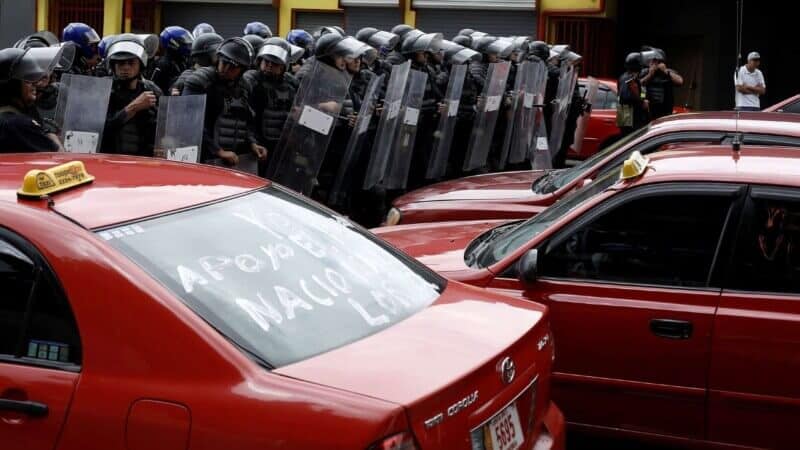
Be aware that some unofficial taxis are “colectivos” — meaning they will pick up others until the car is full. If you’re in a party of two, and your taxi stops to pick up two more people who are headed in the same direction, relax and go with it.
#4
Shuttle Options in Costa Rica
Shuttles are basically mini-buses, or vans with three or four bench seats, that have been hired to drive a dozen or more passengers from Point A to Point B.
If you’re traveling in a group of 8 or 10, this is probably your best option to get to your next destination. Or even if you’re a solo traveler, a shuttle may be conveniently headed to your destination anyway, so it may be much cheaper than a taxi.
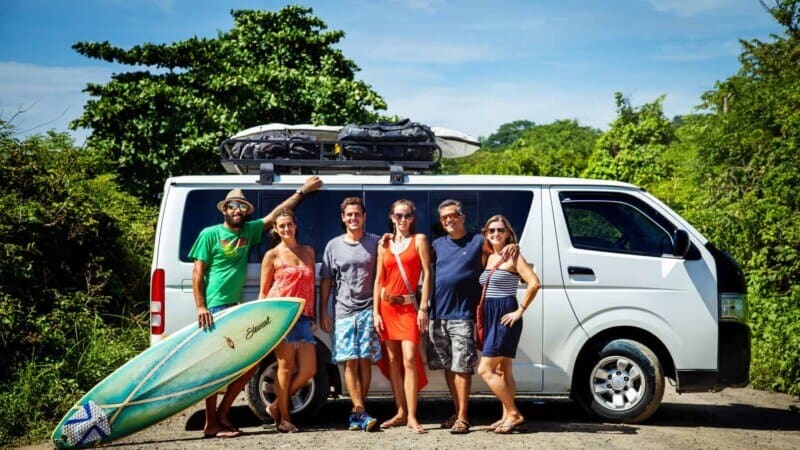
Many hotels and vacation-rental services offer shuttles to pick up passengers at the airport and drive them to their lodging for the night. Outside the airports, some shuttles carry smallish groups of passengers between one popular destination in Costa Rica and another. You can often find a shuttle through the concierge services at your accommodations.
If you’re traveling with a big entourage, booking shuttles is a great idea. But even if you’re a solo traveler or a couple, look for opportunities to jump onto a shuttle to save yourself time and money.
#5
Taking a Plane Around Costa Rica
You might be surprised at how affordable it is to take a small plane from one airport to another within this small country.
You don’t have to be a millionaire to take a one-hour flight from San José to Puerto Jiménez or Tamarindo, saving yourself a day-long bus ride. In fact, we once took a 15-minute flight from Puerto Jiménez into the heart of Corcovado National Park, saving ourselves an all-day drive and an arduous hike.
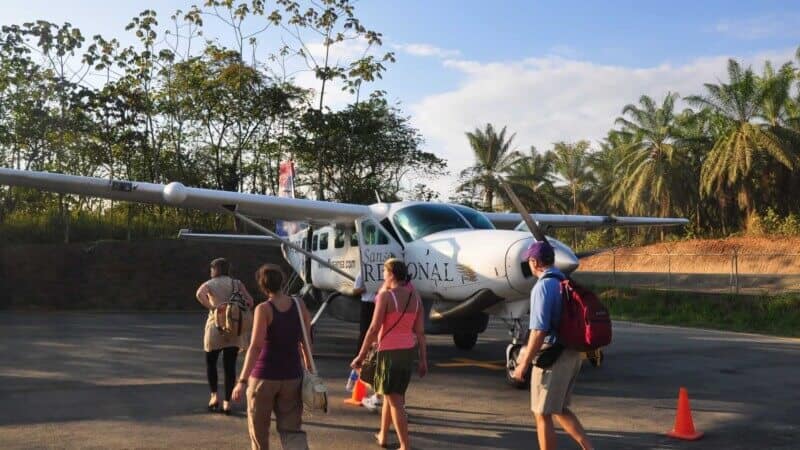
Want to visit Drake Bay, a place that’s usually accessible by ghastly roads or all-day boat rides? Spend a little over a hundred bucks, take a plane, and be there in an hour.
Planes are also a popular way to get to Tortuguero National Park in the northeast, which is impossible to drive to. Your only other option is to travel part of the way by land and the rest by boat.
Domestic flights in Costa Rica are not cheap, but they’re not as expensive as you might think.
#6
Take a Ferry
In parts of Costa Rica, the easiest way to get from here to there is by boat.
This is especially true if you’re in Puntarenas, looking to cross the Nicoya Gulf, or if you’re in Puert0 Jiménez, wanting to get to Golfito. You can also catch a “motorboat taxi” from Jacó to Montezuma, or a “jeep-boat-jeep” from Arenal to Monteverde or vice versa.
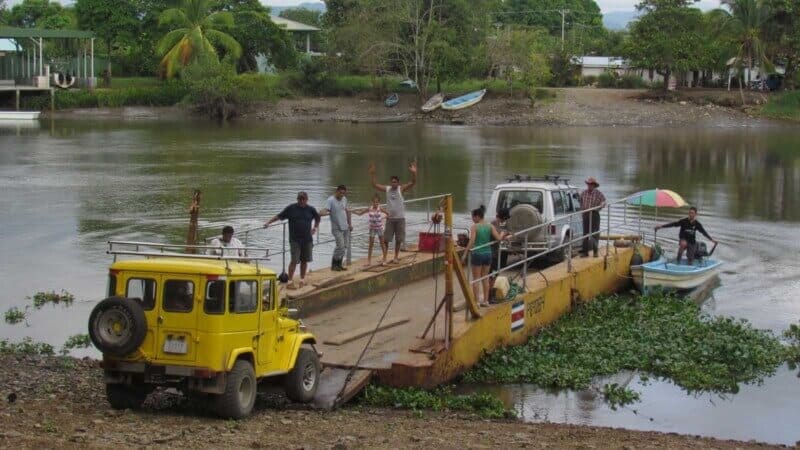
As mentioned already, the only way to get to Tortuguero is by plane or boat. The remote Drake Bay is another destination where people often arrive by river.
From its two major gulfs to the second-largest lake in Central America, Costa Rica is known for big bodies of water. Sure, you can drive around them. But the fastest way to cross the water is usually by water.
#7
Renting a Car
Some people will tell you that you shouldn’t rent a car in Costa Rica, citing the expense as well as the difficulty of negotiating this country’s sometimes dodgy roads.
Yet drawing from nearly 30 years of experience in Costa Rica, we would tell you that you should absolutely rent a car in Costa Rica if you can afford it.
Is it cheap? Never. Are there hidden charges when renting a car? Often there are, and you should find out exactly what the full price will be before booking.
So what about the roads? Driving in Costa Rica is admittedly a bit scary in the confusing, chaotic and heavily populated Central Valley, where San José is located. But few tourists will spend much time in the Central Valley anyway. If you’re headed to the Pacific Coast and you rent a car near the airport (which is west of San José), you’ll face almost no city driving.
Major highways, generally speaking, are as easy to drive on as anywhere else. You may face some hairy moments where you need to cross slow trucks on winding mountain roads. If possible, try to avoid driving in heavy rain, and always try to avoid driving at night.
Other hazards and annoyances may include potholes, mudslides, cows in the road and one-lane bridges. If you’re driving on gravel roads in rural places, there may be streams to cross.
But are you in a big hurry to enjoy your Costa Rican vacation? Slow down, enjoy the journey and arrive alive.
Most of the roads in Costa Rica where tourists venture are paved, well-marked and easy to navigate. Most people who rent a car here will experience no problems.
Imagine the power of having a key in your pocket so you can drive anywhere you want in Costa Rica, at any time you choose. Imagine if you can just take off whenever you feel like it — to search for a secluded beach, to make a run to the store, or even just to explore aimlessly.
There’s probably no better way to see Costa Rica, on your own timetable and on your own terms.
Subscribe to our newsletter
to stay up to date


